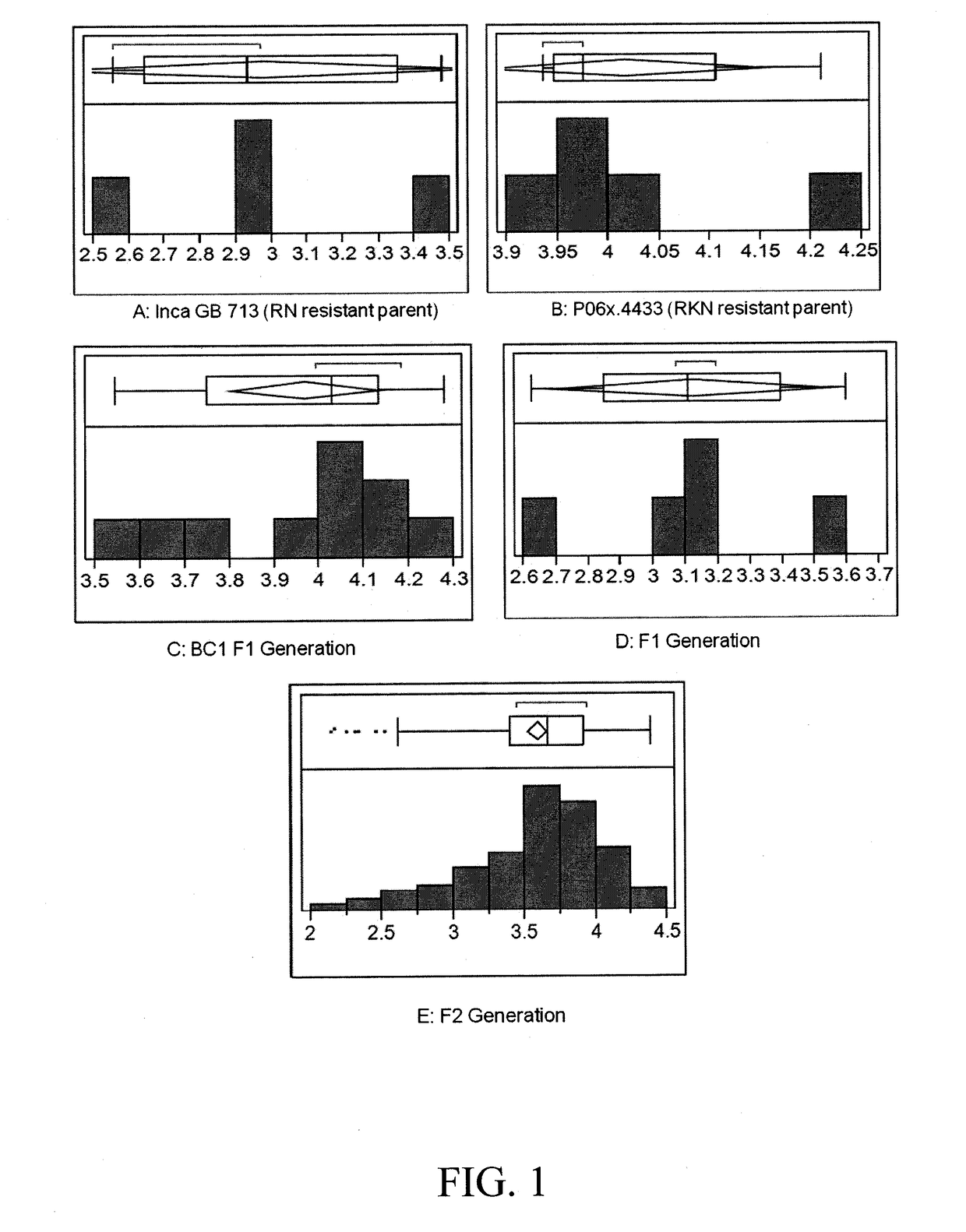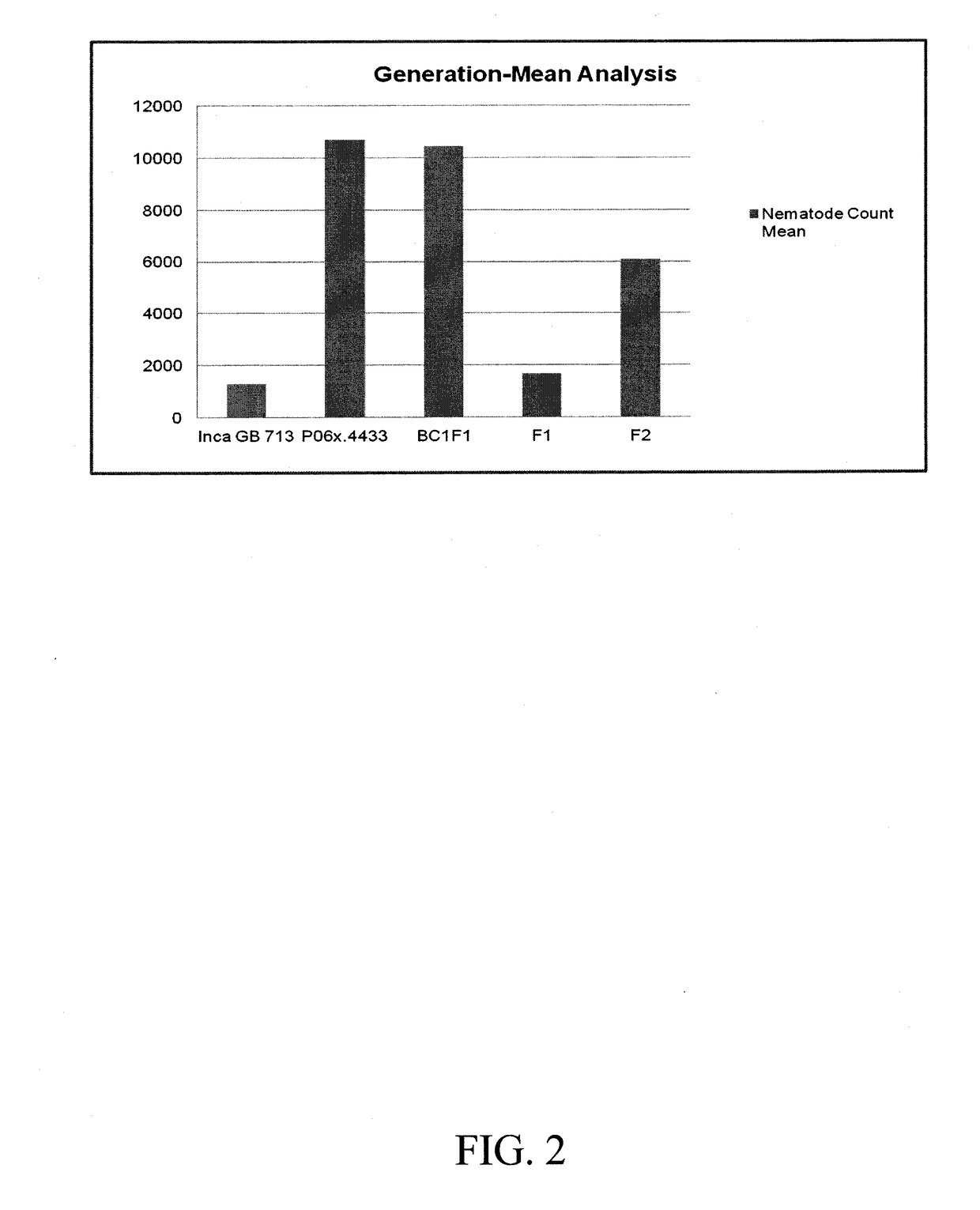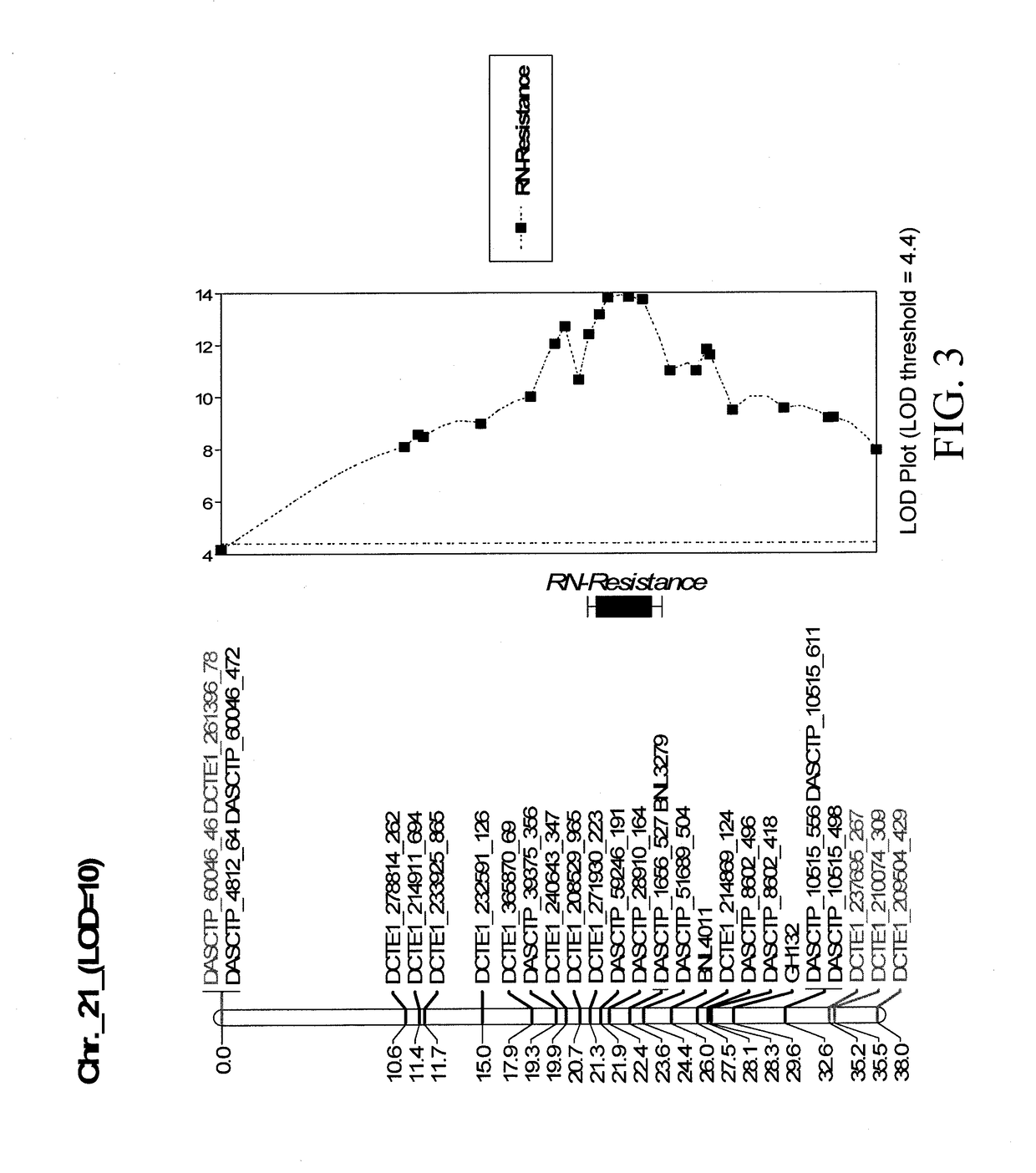Markers linked to reniform nematode resistance
a reniform nematode and marker technology, applied in the field of plant disease resistance, can solve the problems of low genetic variation relative to other, few tools available to combat rn crop damage, and low utility of marker-assisted selection
- Summary
- Abstract
- Description
- Claims
- Application Information
AI Technical Summary
Benefits of technology
Problems solved by technology
Method used
Image
Examples
example 1
and Methods
[0238]Plant Material. Inca Cotton GB713, a short day Gossypium barbadense, reniform nematode (RN) resistant genotype, was crossed with a RN-susceptible genotype to generate F1 seeds. The F2 generation was obtained by selfing F1 plants the following winter.
[0239]Genomic DNA extraction and quantification. Genomic DNA from leaf tissue of individual F2 plants and parents was extracted using a CTAB DNA extraction protocol. Kohel et al. (2001) Euphytica 121:163-72. DNA quality was assessed by gel electrophoresis, and DNA concentration was estimated using a Quant-iT™ PICOGREEN® Quantification Kit (Invitrogen, Carlsbad, Calif.), according to the manufacturer's instructions. The DNA concentration was normalized to 50 ng / μL to accommodate genotyping using iSelect INFINIUM® (Illumina) assays.
[0240]Phenotypic Assay. In a greenhouse study, 214 F2, 10 BC1F1, and parent seeds were germinated in 10 cm diameter clay pots containing pasteurized fine sandy loam soil, at the rate of one seed...
example 2
c Reniform Nematode Resistance Assay
[0244]Despite the photoperiodic nature of the Inca Cotton GB 713, a G. barbadense genotype, a cross-pollination was produced with a G. hirsutum genotype (Upland cotton) that has a high level of resistance to the root-knot nematode (Meloidogyne incognita). An F2 mapping population was produced through traditional hybridization practices. A phenotypic screen for reniform resistance was conducted in this population by collecting the nematode count data from the soil 6 weeks after inoculating individuals with ˜2,000 adult and juvenile nematodes / pot, which in turn represents the extent of RN reproduction. The phenotypic data contained the number of nematodes in each pot, along with a resistance classification as highly resistant (HR9200 RN).
[0245]The number of nematodes ranged from 138 to 24,806 during the phenotypic screen. The values were converted into log10(X+1) to normalize the variability in the phenotypic assay. The frequency distribution of the...
example 3
ng
[0249]Based on the interval mapping results, the RN resistance was mapped to a major QTL on chromosome 21.
[0250]Chromosome 21 had a total of 182 markers spanning 194.8 cM, with average marker coverage every 1.07 cM. The major QTL region was concentrated at the distal end of the chromosome, between 0 and 32.62 cM, with a maximum LOD score of 13.93 observed between DASCTP_28910_164 and DASCTP_1656_527. This major QTL explained 29.8% of the variation in the resistance phenotype. Though two additional QTL LOD peaks were detected on chromosome 21: (i) a QTL LOD peak on chromosome 21 between DASCTP_39375_356 (19.33cM) and DCTE1_208529_965 (20.74cM); and (ii) a QTL LOD peak region on chromosome 21 between DCTE1_214869_124 (27.49cM) and DASCTP_8602_418 (28.33cM), they were considered as parts of one major QTL region. The details of the QTL region on chromosome 21 is represented in Tables 2-4 and FIGS. 3-4.
[0251]
TABLE 2Markers, LOD score, and % explanation in the QTL regions associatedwith...
PUM
| Property | Measurement | Unit |
|---|---|---|
| time | aaaaa | aaaaa |
| temperature | aaaaa | aaaaa |
| concentration | aaaaa | aaaaa |
Abstract
Description
Claims
Application Information
 Login to View More
Login to View More - R&D
- Intellectual Property
- Life Sciences
- Materials
- Tech Scout
- Unparalleled Data Quality
- Higher Quality Content
- 60% Fewer Hallucinations
Browse by: Latest US Patents, China's latest patents, Technical Efficacy Thesaurus, Application Domain, Technology Topic, Popular Technical Reports.
© 2025 PatSnap. All rights reserved.Legal|Privacy policy|Modern Slavery Act Transparency Statement|Sitemap|About US| Contact US: help@patsnap.com



